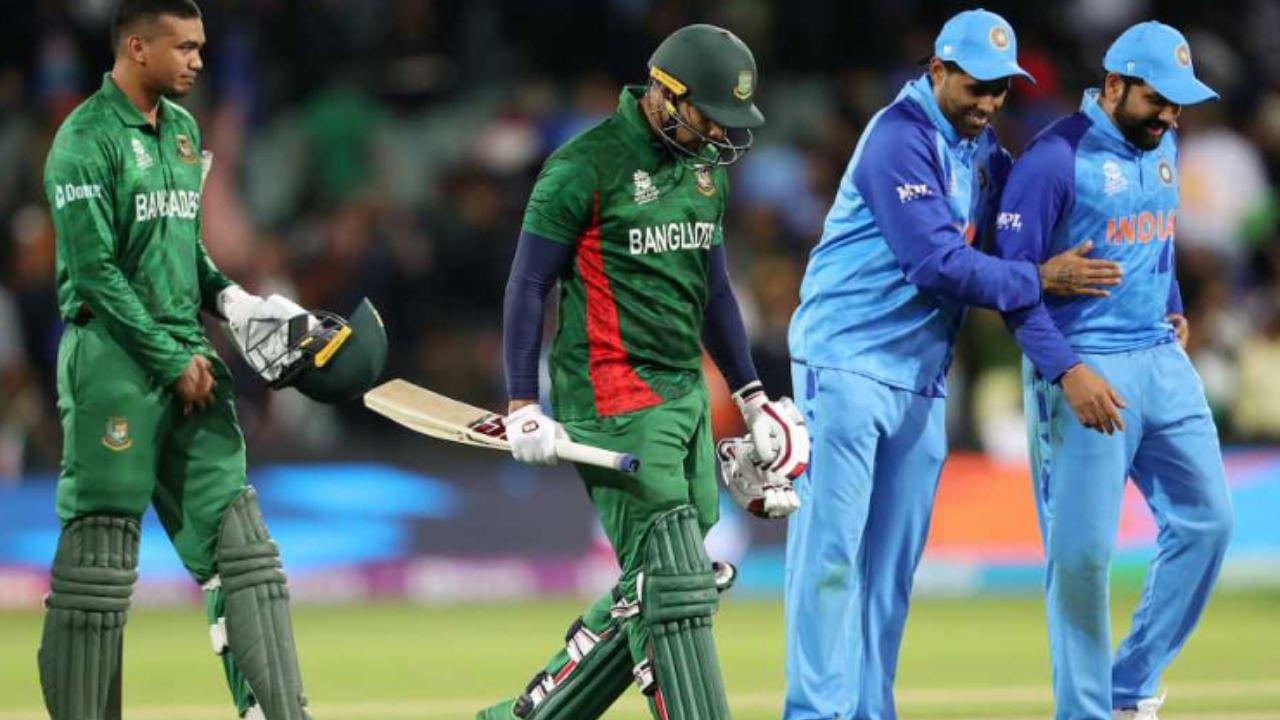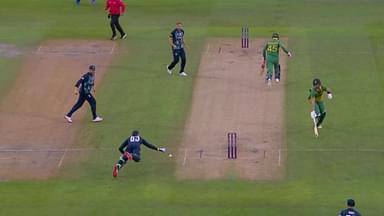Team India found themselves on the right side of the result yet again in what was another cliffhanger of a contest against Bangladesh in the ongoing T20 World Cup 2022, at the Adelaide Oval.
Advertisement
Chasing a stiff target of 185 handed by the Indians, Bangladesh’s experienced opening batter Litton Das (60 off 27) broke loose to play some delightful strokes, to smash a 21-ball half-century in the Powerplay itself.
However, with the scorecard reading 66/0 after 7 Overs, it started raining heavily at the venue, which lead to almost an hour-long delay before the play finally resumed.
With decent enough time lost, the second innings was now reduced to 16 Overs, with Bangladesh being handed the target of 151, or 84 runs off the remaining 9 Overs to win the contest as per the Duckworth-Lewis-Stern or the DLS method calculation.
Here are the DLS equations. #BANvIND #T20WorldCup pic.twitter.com/15EAxFmR4T
— Melinda Farrell (@melindafarrell) November 2, 2022
Despite valiant efforts from the Bangladeshi batters, they ultimately fell short by 5 runs of the revised target.
Why is it named the ‘DLS method’?
Since there is a designated time period within which an ODI or a T20 match should be completed, the match officials cannot keep waiting for the playing conditions to be fit enough for a resumption back of cricketing action.
The situation thus requires to incorporate a system wherein there is a revised target for the chasing team after a reduction in the number of Overs. This is where the DLS method comes into effect.
Earlier known as the D/L method, named after English statisticians Frank Duckworth and Tony Lewis who devised this method to calculate target scores, the formula was first used in the year 1997.
However, after meeting with some criticisms, an Aussie academic Steve Stern came up with an updation to the existing D/L formula ahead of the 2015 ODI World Cup, and the method has since then been known as the DLS method.
First things first, the method does not take into consideration the ability/reputation of a batter or a bowler into account, as the mathematical calculation makes use of quantitative data, no matter how fair or unfair one might deem its calculation to be from a qualitative standpoint.
DLS target calculator
There are two resources in a game of Cricket – Overs and wickets. This means that the target chasing side has these two resources available with it, before the chase begins and while it is on.
These resources are important to ascertain the revised target, as it makes sure to take into consideration the aggressive batting approach with which the batting first team would have played if the match was, for example a 16-Overs-a-side contest, as was the case in today’s twenty Overs World Cup match.
The value of these two resources – ‘Overs remaining’ and ‘wickets lost’, at a certain point in the chase is calculated as a percentage. This percentage figure is arrived at with the help of a computer programme after a careful analysis of an evolving data comprising scoring patterns (for men’s T20 matches in case of the ongoing World Cup), which gets updated each year in July.
While this computer data comprising the two resources are not publicly available, we do have a formula to calculate the DLS target for the chasing side after a certain number of Overs (at least 5 Overs in a T20 match, and 20 Overs in an ODI match), to come up with the revised target after reduction in Overs.
The formula is expressed as: Team 2’s par score = Team 1’s score x (Team 2’s resources/Team 1’s resources).
Here, par score refers to the total that the chasing team should have reached after they are a certain number of wickets down, at the time of rain interruption.
In today’s encounter, Bangladesh’s par score as per a 16-Overs contest arrived at 83, taking into consideration that they had 9 Overs remaining, and 10 wickets in hand. Had they lost a few wickets at the time of rain interruption, they would have had to chase a higher target.


